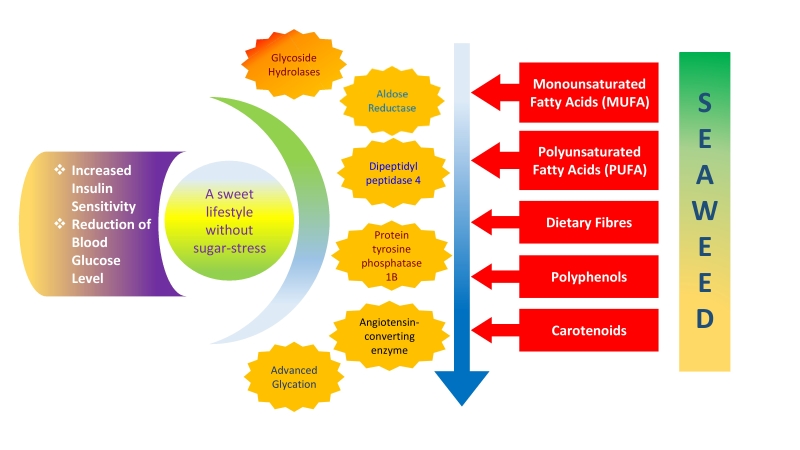Seaweed-Based Interventions for Diabetic Complications: An Analytical Discourse
DOI:
https://doi.org/10.37256/sbe.112021853Keywords:
seaweed, diabetes, bioactive compound, hormoneAbstract

Modern sedentary lifestyle has given rise to a number of health issues; diabetes mellitus is one of them, another worldwide emergency, which is usually attributed either by deficiency or by insensitivity of insulin hormone; the master-regulator of blood glucose level. Seaweeds are rich reservoirs of a plethora of bioactive compounds with a great assortment of therapeutic potential. The goal of this communication is to represent the state-of-the-art about what is known for the anti-hyperglycemic properties recognized in seaweeds, emphasizing about their assets of several bioactive principles, their modes of action over targets of pharmacological interest, in addition to their precise extraction procedures. Various bioactive molecules from seaweed origin, mainly polyphenols, can inhibit several drug targets like α-glucosidase, α-amylase, aldose reductase, protein tyrosine phosphatase 1B, angiotensin-converting enzymes and dipeptidyl peptidase-4 to achieve good glycemic control.

